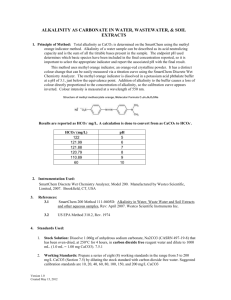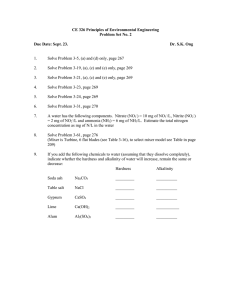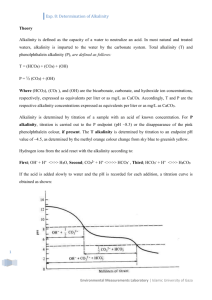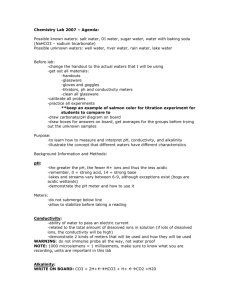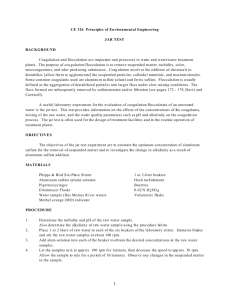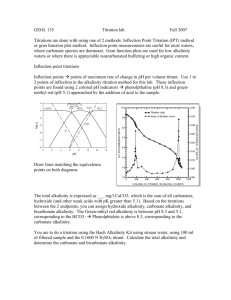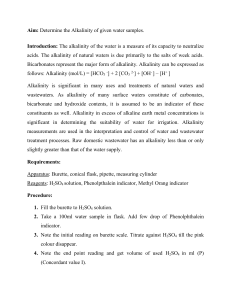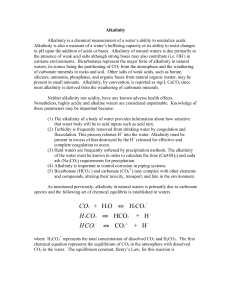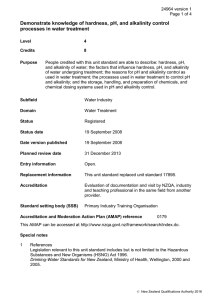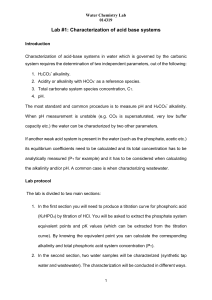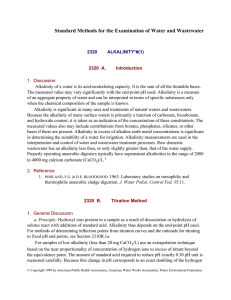Document 13515961
advertisement
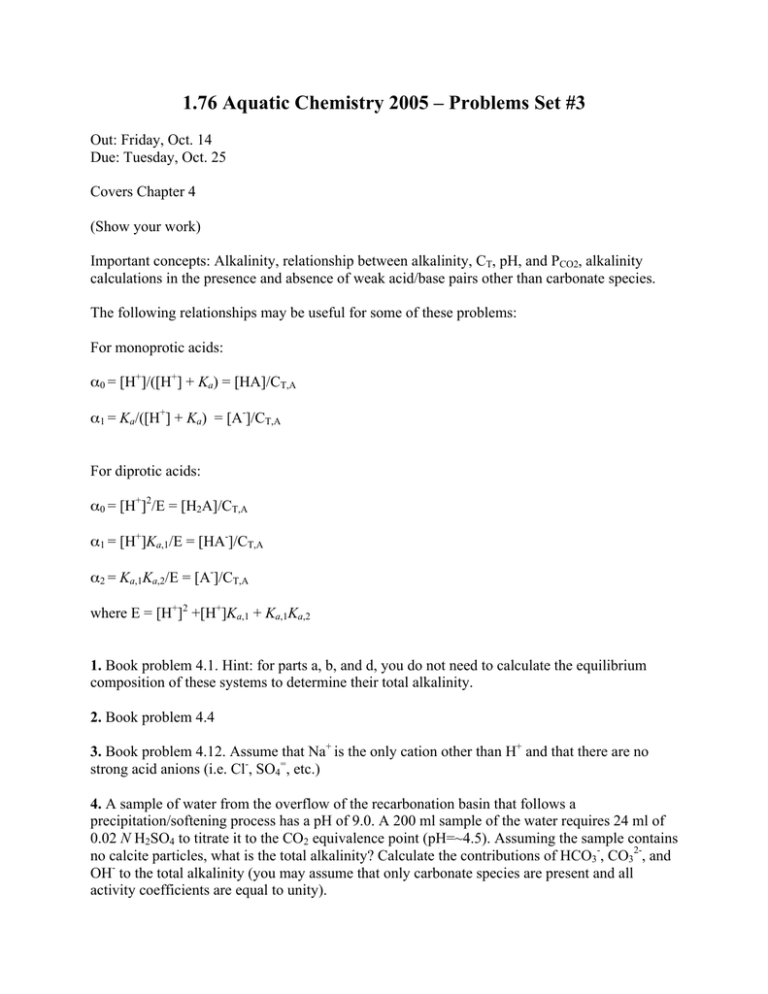
1.76 Aquatic Chemistry 2005 – Problems Set #3 Out: Friday, Oct. 14 Due: Tuesday, Oct. 25 Covers Chapter 4 (Show your work) Important concepts: Alkalinity, relationship between alkalinity, CT, pH, and PCO2, alkalinity calculations in the presence and absence of weak acid/base pairs other than carbonate species. The following relationships may be useful for some of these problems: For monoprotic acids: α0 = [H+]/([H+] + Ka) = [HA]/CT,A α1 = Ka/([H+] + Ka) = [A-]/CT,A For diprotic acids: α0 = [H+]2/E = [H2A]/CT,A α1 = [H+]Ka,1/E = [HA-]/CT,A α2 = Ka,1Ka,2/E = [A-]/CT,A where E = [H+]2 +[H+]Ka,1 + Ka,1Ka,2 1. Book problem 4.1. Hint: for parts a, b, and d, you do not need to calculate the equilibrium composition of these systems to determine their total alkalinity. 2. Book problem 4.4 3. Book problem 4.12. Assume that Na+ is the only cation other than H+ and that there are no strong acid anions (i.e. Cl-, SO4=, etc.) 4. A sample of water from the overflow of the recarbonation basin that follows a precipitation/softening process has a pH of 9.0. A 200 ml sample of the water requires 24 ml of 0.02 N H2SO4 to titrate it to the CO2 equivalence point (pH=~4.5). Assuming the sample contains no calcite particles, what is the total alkalinity? Calculate the contributions of HCO3-, CO32-, and OH- to the total alkalinity (you may assume that only carbonate species are present and all activity coefficients are equal to unity). 5 To a first approximation, photosynthesis and respiration change total carbon without changing alkalinity according to the reaction: CO2(aq) + H2O = CH2O(aq) + O2(aq) These processes are often much faster than gas exchange This question examines whether measuring pH changes would be a good way to quantify the rate of change in total inorganic carbon due to photosynthesis and respiration. We will consider both a freshwater and seawater system with an alkalinity of 2.5 meq and a pH around 8.3. Do not use approximations in these calculations. A spreadsheet may be helpful. a) Calculate CT as a function of pH (range 8 to 9) for the freshwater. b) Calculate CT as a function of pH (range 8 to 9) for the seawater assuming that only carbonate species contribute to alkalinity. Due to a combination of ionic strength effects and complexation reactions (which will be discussed in later the class), you will need to use a value of 6.0 for the pKa,1 of H2CO3* and 9.1 for the pKa,2 of HCO3-. c) Finally, calculate CT as a function of pH (range 8 to 9) for seawater including the effect of borate on alkalinity. Total borate (boric acid + borate) in seawater is 0.4 mM. Use a pKa of 8.7 for boric acid. Plot your results for parts (a), (b), and (c) d) Suppose I have a method that can measure pH with a precision of ±0.005 pH units. What magnitude of change in CT can I reliably detect by measuring the pH change in the freshwater? In the seawater? Why is there a difference?

